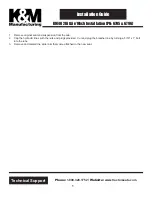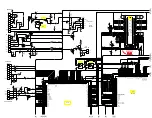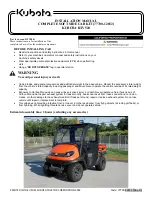
Page 12
To ensure that the link between the two bridles remains tight, remember to fasten
the knot using the Velcro strip on the harness reserve parachute bridle.
Third system
If you are using a reserve parachute with directional
control and dual bridle, or if your reserve parachutes in
any case has a double-riser bridle,
It can be connected to the harness using the two loops
positioned at the base of the harness bridle, near the
padded shoulder straps. In this case, the
harness’ reserve parachute bridle will not be
used, and so it should be folded, fastened using two elastic bands, and
positioned under the cover behind the pilot’s neck.
The two connections should be made using screw-lock karabiners with
a breaking strength of at least 1,400 kg. In any case,
It is important to verify that the length of the bridle is sufficient to
position the reserve parachute inside the harness pocket, and that
there is sufficient play to enable the parachute to be taken out of the
pocket without causing the reserve parachute deployment bag itself to open during
extraction.
To prevent anomalous lateral loads, the bridle should be attached to both
the loops on the shoulder straps. Not to just one of them.
Inserting the reserve parachute:
Insert the parachute in the harness container with the handle visible toward the
outside and with the handle coupling loop to the float bag facing upward.
Immediately position the handle in its specific housing. Introduce a thin rope
(paragliding funicular strip type) into each elastic loop which you will use to help
close the container.
Introduce the elastic loops into the smallest of the eyelets on the flaps of the
container. Take the bridle cover zip all the way to the right to then close it, moving
the zip about 20 cm leftward.
1
2
3
4
5
6




































